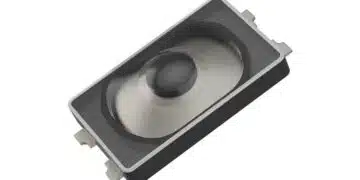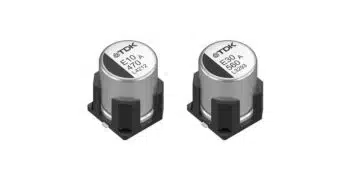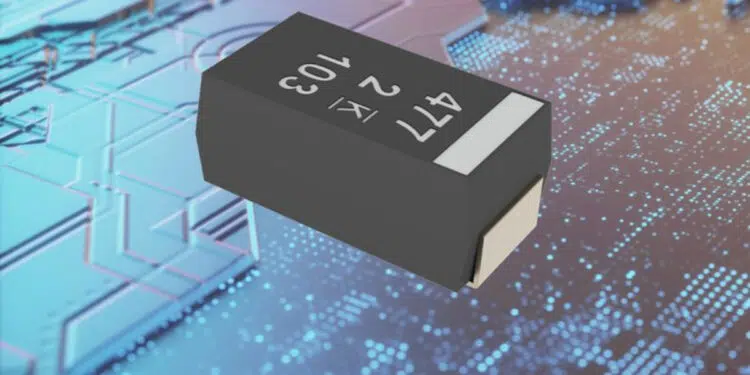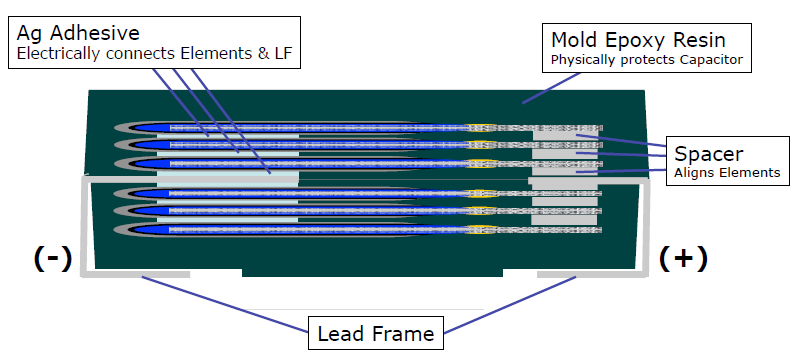High demand in power management and miniaturization requirements in combination with extreme harsh environmental conditions are today some of challenges that designers need to solve. KEMET is expanding the AO-CAP ® Aluminum Polymer SMD capacitor offering with new A798 Series. The new series was developed and qualified with the news material setting and process flows that allow a life endurance specification of 125ºC and a humidity bias capability of 85ºC/85% relative humidty at rated voltage up to 1000h.
KEMET A798 Aluminum Organic Capacitor AO-CAP® is a solid state aluminum capacitor. The cathode is a solid conductive organic polymer, which results in very low ESR and improved capacitance retention at high frequency when compared to a traditional anode systems.
The construction is based in a stacking of aluminum elements. The surface of each aluminum sheet is covered with an oxide dielectric and a conductive polymer. Each element serves as individual capacitive elements and stacked in parallel. External layers are finished with carbon and silver. The construction and a photo from a element are presented in figures 1 and 2.
The stacking of the individual elements is what gives rise to the large capacitance values of MnO2 and the very low resistivity of silver helps to minimize ESR.
Unlike their tantalum counterparts, AO-CAP® may be operated at steady state voltages up to 100% of rated voltage without the need to derate. This characteristic is due to the low stress interface with dielectric and polymer counter electrode and is a favorable reliability parameter.
Since there is no liquid electrolyte, the A798 offers long operational lifetimes, low ESR, and high operational temperatures.
The ESR in frequency shows a boarder curve with values < 10mOhm and minimal variation with temperature.
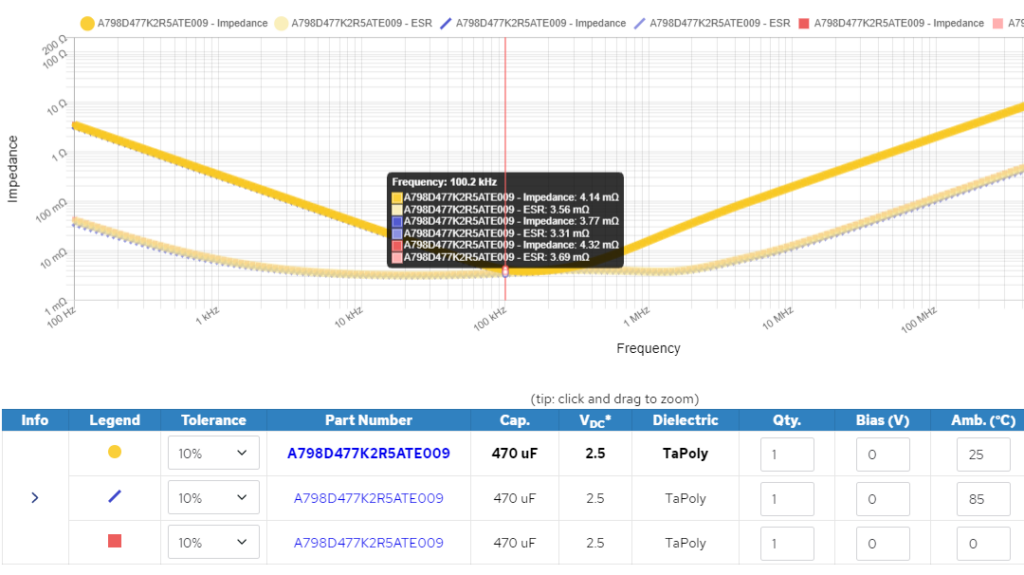
Enhancements to the design and selected material upgrades were introduced to deliver 1,000 hours at 85°C/85% RH rated voltage and 125°C Endurance Life and Storage. The initial product portfolio is limited to two part number suitable to support low voltage power rails in typical DC/DC converters, notebook PCs, telecommunications, displays, and industrial applications with harsh humidity and temperature requirements. The new part numbers are described in Table 1.
Conclusions
All this means that AO-CAP can deliver very low ESR performance across frequency while maintaining a steady amount of capacitance. This results in minimized losses especially in switching regulators. Minimizing losses is particularly critical in battery-operated devices where up-time is crucial. The abundance of aluminum contributes to a very steady price and supply chain of AO-CAP. For more information please visit https://ec.kemet.com/polymer.


